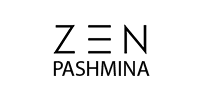Cashmere in Nepal
Cashmere in Nepal
The term ‘Cashmere’ is derived from the word Kashmir, a region located in the northwest of India. Cashmere has been produced in Mongolia, India and Nepal for hundreds of years. Cashmere in Nepal is commonly known as ‘Pashmina’ or ‘Chyangra pashmina’. Cashmere is softer, warmer, lighter, and stronger than any other regular wool.
Cashmere in Nepal is shredded from the Himalayan Goats, sheltered at the height above 2000 meters from the sea level. The Himalayan goat of Nepal is also known as ‘Chyangra’ in the local language. Nepal cashmere wool is extracted from the fine undercoat hair of the Himalayan goats. These goats produce a soft thin inner coat, insulating ultra-fine hairs. The soft undercoat hair is used to produce the cashmere wool. The hair is shredded or cut from the goat during spring season. The goats are not harmed in the process of shredding the hair. Average goat yields 300 to 400 grams of raw cashmere wool every year. In average, to make a single cashmere shawl, three Himalayan goats hair is required. After the wool is shredded, it is spun into charkha, a traditional way of making fibres into yarns, done manually. Yarns are then fitted into a shuttle for weaving. Different types of handlooms are used to create different sizes and patterns. Jacquard system is one the intricate type of handloom used in making interesting and beautiful patterned cashmere shawls. After the cashmere shawl is made, it is cut out of the loom and hand washed in soap and water. After the shawl is dry, it goes through brushing to extract extra fuzziness and to make the surface smooth. Then it is sent for inspection and dying. Sample dying in a small fabric is done first to insure the colour shade. After the sample testing, the dye solution is made in a big pot and the shawl is soaked. In Nepal, the dying colours are generally imported from India and Europe. After dying, the pashmina again goes through careful inspection. Minor errors are checked and corrected. The fringes of the shawls are made by hand. After the fringes are made, it is soaked in the softener for smoother and softer finish. It is then dried and sent for ironing. The finale inspection is done to rectify any defects. Finally it is labelled and packed.
Cashmere or pashmina has helped the economy of Nepal immensely; it is one of the largest exports of Nepal. Pashmina is exported to more than 40 countries from Nepal, mainly Europe. Cashmere shawls of Nepal are splendid and elegant, not just because of the exquisite Chyangra fibre, but also because of the skilled and hardworking craftsmanship of Nepalese workers, who give their 100% in making every single shawl a luxury. Mostly cashmere in Nepal is blended with fine silk or organic cotton. Blending cashmere yarn with these natural yarns reinforces the delicacy of Cashmere, enhances the fibre strength, and also makes it cost effective. Usually 70% cashmere with 30% silk and 70% cashmere with 30% cotton are popular combinations. In recent years, other winter wears of cashmere like stoles, sweaters, stoles, cardigans, ponchos, and gloves have also become popular. www.kathmanduclothing.com offers a range of cashmere products, from 100% cashmere to blended 70% cashmere and 30% silk.
